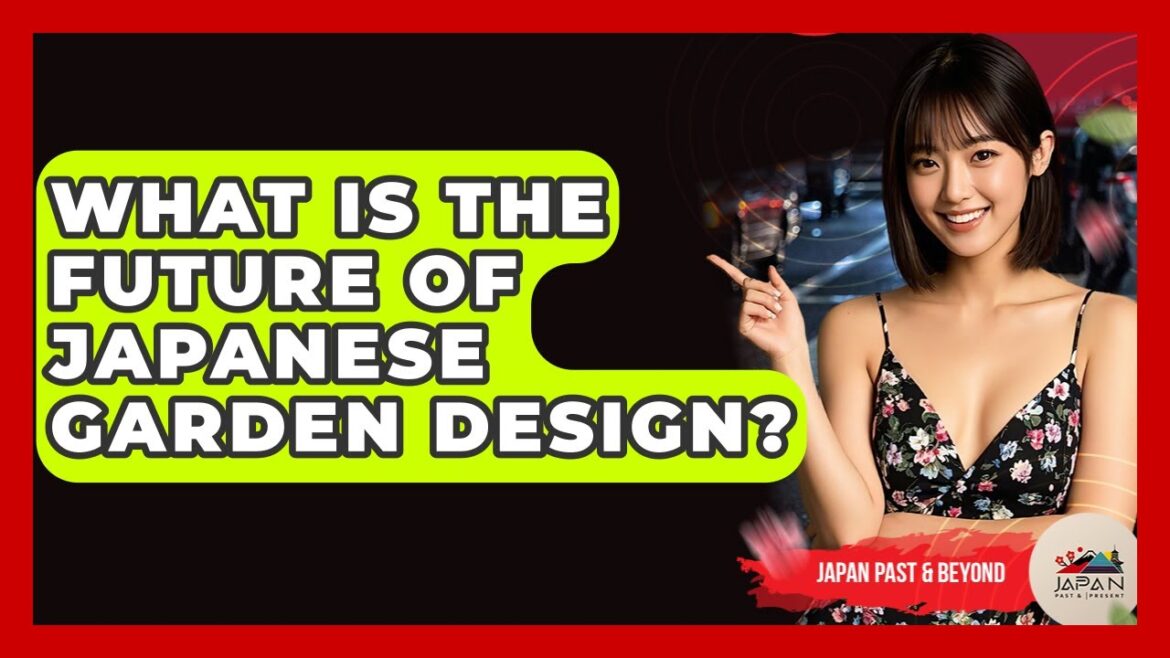What Is The Future Of Japanese Garden Design? In this informative video, we’ll take a look at the evolving world of Japanese garden design. We’ll explore the rich history that has shaped these tranquil spaces and discuss the exciting trends that are influencing their future. From the philosophy of Wabi-Sabi, which celebrates the beauty of imperfection, to the rise of indoor gardens focused on mindfulness, there are many innovative approaches emerging in this field. Sustainability is also a major consideration, as designers increasingly prioritize eco-friendly materials and practices that honor nature.
As climate change impacts our environment, Japanese gardens are adapting to ensure resilience and vibrancy. We’ll also examine how traditional design elements are being integrated into modern urban spaces, creating a harmonious blend of culture and contemporary architecture. If you’re interested in how these beautiful gardens will continue to evolve while maintaining their connection to nature, this video is for you. Join us for a fascinating discussion about the future of Japanese garden design and subscribe to our channel for more engaging content about Japan’s culture and heritage.
⬇️ Subscribe to our channel for more valuable insights.
🔗Subscribe: https://www.youtube.com/@JapanPastandPresent/?sub_confirmation=1
#JapaneseGardens #GardenDesign #WabiSabi #IndoorGardens #SustainableGardening #ClimateChange #UrbanGardens #Nature #Mindfulness #JapaneseCulture #GardenTrends #EcoFriendly #Bonsai #GardenAesthetics #CulturalHeritage #JapaneseDesign
About Us: Japan Past and Present is your window into the rich tapestry of Japanese history, culture, and heritage. Our channel aims to take you on an engaging journey through time, showcasing the remarkable evolution of Japan from ancient traditions to modern phenomena.
Please note that our content is purely informational and should not be considered professional advice. We encourage viewers to conduct their own research and due diligence on topics discussed.
what is the future of Japanese garden design have you ever wondered how Japanese gardens with their serene beauty and deeprooted history will evolve in the coming years the journey of Japanese garden design stretches back to the medieval period influenced heavily by the structure of Japanese feudalism during this time gardens were not just for aesthetics they served as spiritual and philosophical spaces symbolizing the harmony between nature and human existence as we look ahead several trends are shaping the future of these enchanting spaces one significant trend is the wabishabi philosophy this traditional Japanese aesthetic appreciates beauty in imperfection and transients as more people embrace this idea gardens are becoming less formal and more organic wabishabi gardens often requiring less maintenance and celebrate the natural flaws found in nature appealing to those who prefer a more relaxed gardening style another exciting development is the rise of indoor gardens these spaces are gaining popularity for their simplicity and focus on mindfulness indoor gardens often feature natural materials such as wood stone and bamboo they create warm atmospheres and often include elements like bonsai trees and water features to enhance tranquility sustainability is also becoming a key focus in garden design there is a growing preference for using materials that are environmentally friendly this aligns with the traditional Japanese respect for nature by choosing sustainable materials gardens can be both beautiful and conscious of their environmental impact as climate change becomes a pressing issue Japanese garden design is adapting to be more resilient designers are selecting plants that can withstand extreme weather and creating gardens that can adjust to changing conditions this forward-thinking approach ensures that gardens remain vibrant and functional lastly the integration of Japanese garden design into modern urban spaces is on the rise traditional elements are being blended with contemporary architecture resulting in unique outdoor areas that reflected both Japan’s cultural heritage and the needs of modern life incorporating these trends the future of Japanese garden design will likely blend traditional aesthetics with modern sustainability this evolution will ensure that these beautiful spaces continue to reflected Japan’s profound connection with nature while adapting to the needs of future generations

